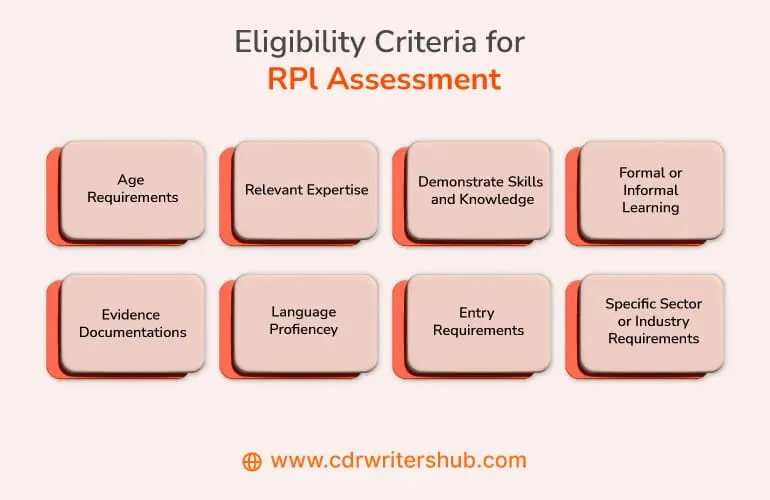How does RPL assessment work for IT engineers in Australian migration?

How does RPL assessment work for IT engineers in Australian migration?
Are you an IT professional aspiring to make Australia your new home? If you don’t have formal qualifications, worry not! The Recognition of Prior Learning (RPL) assessment could be the key to your successful migration.
For IT engineers looking for an Australian migration visa but lacking ICT qualifications, this RPL is a game-changer. The Australian Computer Society (ACS) assesses all applications based on ICT skills.
When an applicant’s ICT qualifications don’t match the standards, submitting an ACS RPL report becomes an option. This unique path allows non-ICT professionals to highlight their skills in the ICT domain. The focus is on the RPL’s “Key Areas of Knowledge,” spotlighting skills gained through hands-on work experience.
The goal is to highlight that practical skills are just as valuable as earning a degree from an Australian university. Understanding the requirements right from the start of your application is crucial to succeed. That’s where a reliable RPL report-writing service comes in handy.
Looking for their assistance ensures you have accurate information about every part of the report. Besides, it’s beneficial to review a sample report approved by ACS. This way, you’ll be better prepared and equipped for a successful application process.
Professionals in this field have a deep understanding of ACS RPL guidelines. With their broad experience, they know the language, writing style, and information needed for a successful result. Opting for someone with a 99% approval rate with ACS, AE, and IPENZ is a wise choice.
In this blog, we will learn about RPL assessment, eligibility, and its components, along with its application process. We will also learn how RPL differs from formal qualifications and get some super helpful tips to complete your RPL assessments.
Understanding ACS RPL
Table of Contents
ACS RPL, or Recognition of Prior Learning, is a unique evaluation for people looking to move to Australia. But might have different ICT qualifications than the ACS usually looks for. ACS checks these applications based on ICT skills, allowing non-ICT professionals to show skills related to the ICT field.
In the “Key Areas of Knowledge” section, you show the practical skills you got from work experience. The goal is to prove that practical understanding matches up with getting a degree/diploma from an Australian university.
Understanding Recognition of Prior Learning (RPL)
Recognition of Prior Learning (RPL) is an assessment process. It generally evaluates an individual’s competencies acquired through formal, non-formal, and informal learning. The goal is to see if these skills match the requirements in the training package or VET-accredited courses.
- Formal learning: Through a structured program linked to AQF qualifications.
- Non-formal learning: Structured instruction does not lead to AQF qualifications.
- Informal learning: Resulting from work, social, family, hobby, or leisure experiences.
Documentation for RPL Application
Whenever applying for Recognition of Prior Learning (RPL), various documents can support your case:
- Records of completed training
- Assessment items and records
- Declarations from your employer
- Copy of student records provided by ASQA
Application Process
Starting the application process means understanding what’s expected. Getting help from an RPL report writing service is an excellent idea to ensure the report includes all the correct information. Reviewing an ACS-approved sample report can also be a helpful starting point.
These service providers know ACS RPL guidelines well. It includes the correct language style and information needed for success. Choosing a provider with a high approval rate with ACS, AE, and IPENZ can boost your chances.
Submission Categories
ACS RPL submissions fall into two categories, depending on your background:
1. Relevant ICT Degree with Insufficient Content
- If you have an ICT degree but lack enough ICT content, you need six years of professional experience as an ICT professional.
- Your job field must match the nominated discipline’s ANZSCO code.
2. No Tertiary Qualifications
- If you need tertiary qualifications, you must show eight years of work experience in ICT.
- The extra two years can be something other than the ANZCSO classification you’re applying for.
Details of ACS RPL Report
The ACS RPL report involves sharing two projects, giving insight into why your skills are relevant to ICT. These projects must cover a few essential aspects:
1. Network Topologies and Facility Sizes Installed
Show that you understand how to set up network topologies and the size of facilities installed.
2. Project Management Techniques and Quality Parameters
Explain how you use project management techniques and stick to quality standards during projects.
3. Contribution to Analysis and Design
Talk about how you helped in analyzing and designing processes in the projects.
4. Database and File Management Techniques
Share how you use database and file management techniques in the projects.
5. Programming Languages Used
Detail the programming languages you used in the projects.
6. Internet Application Design and Security Measures
Show your role in designing internet applications and implementing security measures.
7. Managerial Responsibilities
Outline any managerial responsibilities you had during the projects.
Components of RPL Assessment
The RPL assessment is akin to a puzzle with two critical pieces:
a) RPL Project Reports
Craft detailed narratives showcasing your involvement in IT projects. Highlight your role, responsibilities, challenges, and the solutions you implemented. These reports are the bread and butter of proving your technical skills and expertise.
b) RPL Recognition and CV
Your CV is your calling card. Create a comprehensive document detailing your educational background, work experience, achievements, and certifications. You need to emphasize your contributions and show how your skills align with the requirements of the Australian ICT industry.
Eligibility Criteria for RPL Assessment
The eligibility criteria for RPL assessment can vary depending on the country. Also, due to the organization conducting the assessment. So, there are some common factors to consider:
1. Age Requirement
Start by checking if there’s a minimum age needed for the RPL assessment. Ensure you meet any specified age criteria to proceed with the recognition process.
2. Relevant Experience
Your eligibility depends on having relevant work or practical experience in your desired field. You need to ensure that your assessed experience aligns with the requirements of the qualification or skills.
3. Demonstrable Skills and Knowledge
Showcase your skills and knowledge to meet eligibility criteria. You need to show that you have the required competencies in the specific area you aim to be in.
4. Formal or Informal Learning
RPL embraces various learning paths. It includes formal learning, like previous education and certifications. In the same way, informal learning could be on-the-job training or self-study. The goal is to recognize diverse learning experiences.
5. Evidence Documentation
You should support your skills and knowledge with tangible evidence. This proof could be portfolios, work samples, references, or any relevant documents that prove your abilities.
6. Language Proficiency
Be aware of language requirements. Depending on the language of the assessment, you need to meet specific skill standards. It ensures effective communication during the skills assessment process.
7. Entry Requirements
Ensure you meet any specific entry requirements for the qualification you aim for through RPL. These prerequisites are set by the organization conducting the assessment.
8. Specific Sector or Industry Requirements
Some RPL assessments might introduce extra criteria specified to a specific sector or industry. These criteria align the recognition process with a particular field’s unique standards.
Taking Practical Steps
Consider consulting experts or advisors if any aspect of the process needs clarification. Their guidance can provide help based on your unique situation.
1. Communication
Communicate your skills and experiences. Use straightforward language in your documentation to ensure your capabilities shine through.
2. Thorough Documentation
Gather all necessary documents and evidence. Portfolios, work samples, and testimonials are your tools to showcase what you bring to the table.
3. Adherence to requirements
Follow the eligibility requirements. It will ensure a smooth process and avoid roadblocks on your formal recognition journey.
4. Aim for Clarity
This clarity applies to written documentation. Also, it might be any interactions you may have during the assessment process.
5. Recognition in Depth
Recognition of Prior Learning is a process that acknowledges the skills and knowledge. That knowledge you might have gained through various learning experiences. It values your practical expertise alongside formal education.
6. Customized Recognition
RPL recognizes everyone’s unique journey in gaining skills. That might be through formal education or on-the-job experiences.
7. Empowering Your Journey
The RPL journey empowers you to seek recognition for the skills and knowledge you’ve acquired over time. It’s a pathway to formal acknowledgment that goes beyond traditional education.
Embarking on the RPL journey is a significant step toward acknowledging your skills and knowledge. Understanding and addressing eligibility criteria will make the process easier.
RPL Assessment Vs. Formal Qualification
Below are the differences between RPL assessment and formal qualification:
1. RPL Assessment (Recognition of Prior Learning)
- Recognizes and assesses existing skills, knowledge, and experience, no matter how acquired.
- Get formal recognition for what you’ve learned. This includes experiences at work, on-the-job training, self-study, or other informal learning activities.
- Assesses competency based on prior learning and experiences. It often gets done case-by-case and tailored to your unique background and qualifications.
- You can use it to earn credit toward a formal qualification, speed up completion, or even get a full qualification without more formal study.
2. Formal Qualification
- This is about finishing a structured and accredited program or course from an authorized school.
- Educational institutions or accrediting bodies award degrees to students who fulfill specific requirements. It includes completing a set curriculum, passing assessments, and meeting other criteria.
- Follows a structured curriculum with predefined learning outcomes and assessments. It requires a specific amount of study and participation in classes or training programs.
- Employers, professional bodies, and educational institutions recognize it. Then, accept them as they meet specific standards and quality requirements.
Tips for Successful RPL Assessment
To increase your chances of a positive outcome in your RPL assessment, consider these tips:
a) Focus on Relevant Projects
Choose projects that align with ACS guidelines and showcase your expertise in specific ICT areas.
b) Be Specific and Concise
In each project report, explain your role, achievements, and the impact of your work.
c) Showcase Continuous Learning
Show your dedication to lifelong learning. Emphasizing any professional development courses, workshops, or certifications you’ve completed.
d) Seek Professional Help
If you have questions about any part of the RPL assessment, it’s wise to seek advice from RPL experts or migration consultants. CDRWritersHub can provide valuable help for correct documentation. They can assist you in preparing your RPL report for a positive assessment.
Conclusion
The ACS RPL assessment is a big help for IT professionals moving to Australia. It helps fill in qualification gaps and shows off your practical skills. To make this process easier, get guidance from experienced RPL service providers.
Showcasing your ICT skills through detailed projects is a great way. It makes it easier to join the Australian workforce and explore career opportunities in the dynamic IT world of Australia.
You can increase your chances by creating excellent project reports and showing your expertise. For help with CDR reports, RPL reports, and Skill Assessments, don’t hesitate to contact CDRWritersHub. Best of luck with your RPL assessment. May your skills open doors to a rewarding career in the Australian IT industry!



